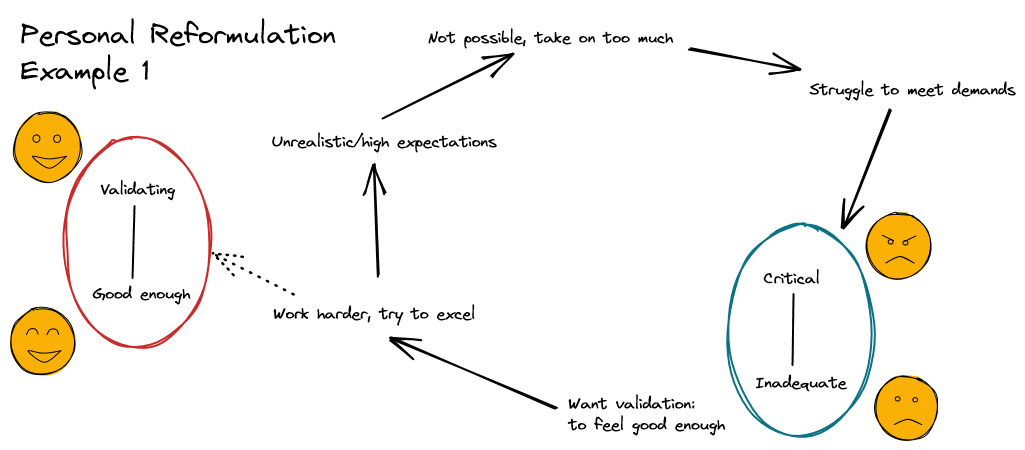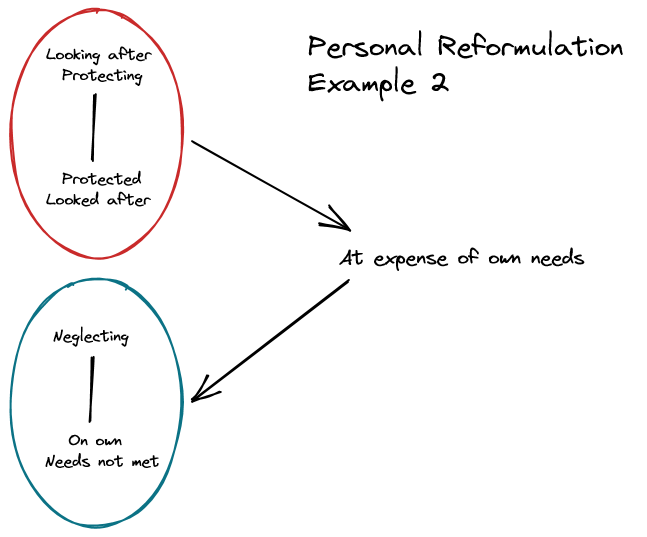In this blog, Catalyse Associate Jenny Marshall shares some thoughts and experience on how personal reformulation can aid difficulties in the workplace.
“I’ve worked hard in my career and this has always served me well until recently. I was struggling in a new more senior role and the harder I worked, the worse it seemed to feel. I just didn’t seem to be able to find a way out”.
“For the first time, I really feel like I understand burnout; ever increasing demands felt impossible and I found I couldn’t switch off from increasing anxiety”.
The examples above may sound familiar. We may have seen aspects of them in colleagues, people we manage or people managing us. We may have felt these experiences within ourselves. In both examples, there is a narrative that the usual ways of coping or surviving in the workplace, are no longer working. There is a sense of stuckness, a drive to find an alternative way of being but not knowing or understanding how to do this. In such situations, this may be a good starting point for a personal reformulation (PR).
There may be many reasons why someone may not choose to have therapy in this situation. Instead they may want help in understanding why old patterns of working and coping now feel unhelpful and are keeping them stuck. These patterns, whether relating to others or to self, are a good here and now place to start in a PR.
We all experience change in our working lives and with change brings uncertainty and anxiety. How we respond to this depends on our individual relational patterns and ways of coping. Having an awareness of our own patterns can help us to navigate these changes.
The first example,
“I’ve worked hard in my career and this has always served me well until recently. I was struggling in a new more senior role and the harder I worked, the worse it seemed to feel. I just didn’t seem to be able to find a way out”.
on further reflection, had been triggered by a change in role. This led to the usual strategy: work hard, always meet or exceed expectations no longer being possible. This can happen in more senior roles when staff are no longer only responsible for their own work but for the work of others. Exploration of this pattern in more detail also flagged up how not only was it not working; it was actually hindering performance. Working harder and taking more on was compromising the ability to deliver on expectations. It was only when this was acknowledged through mapping and the reflective process, that a shift became possible. It was easier to understand what needed to change. This pattern is represented below as a series of boxes and arrows.

The second example represents an pattern commonly seen in healthcare.

“For the first time, I really feel like I understand burnout; ever increasing demands felt impossible and I found I couldn’t switch off from increasing anxiety”.
As carers, we can often feel a natural pull to being responsible, caring and looking after others. However this can become problematic when we do this to the extent of neglecting our own needs. Similar to the first example, creating a safe space to explore these dynamics is key to understanding what needs to change.
With both the above examples, we could take the reformulation further, to reflect on early childhood patterns. This helps us see similarities between the relational patterns in the here and now and in early relationships. There may be a narrative around the current coping strategies and how they have developed from childhood. With a personal reformulation, the focus is on the here and now, within the workplace. Some individuals may choose to go on and follow this up with a personal therapy. For others they may not and PR may be sufficient for understanding and/or change.
PRs may be helpful for those workplace situations where we start to notice, ‘I am struggling, I feel stuck and am not sure what to do’. We might perhaps notice feeling like ‘I’ve been here before, feeling like this, I want to do things differently’. If we notice and think about patterns causing us difficulty – which we all have – at an early stage, it may prevent further difficulty or even sickness from work. It may allow for different choices, decisions and what CAT terms ‘exits’ from these patterns.
As a PR is briefer than therapy, I feel it is worth a note about the ‘healthy’ parts of a map. If you are coming to a PR in relation to current challenges in the work place, space to explore multiple positions on the map may help by allowing a ‘zooming out’ from the difficulties. This can help you consider when things have been different. Space to remember and learn from times when we have felt more able to overcome difficulties may give us the ‘exits’ we need from our current difficulties. As we all have problematic patterns, we all have strengths and ways of surviving which are effective and allow us to feel good about ourselves.
There are different ways of doing PRs. Traditionally they took place over one longer session (up to three hours with a break). They were adapted to an extended (usually two hours) session with a follow up session (up to an hour). Since online working has become common, a further adaptation has been to conduct the PR over three hourly sessions. With all options, it is important that the therapist is trained in cognitive analytic therapy.
Catalyse personal reformulation therapists are listed on the page at this link. They are all accredited CAT practitioners or CAT psychotherapists and are familiar with the aims and methods of the CAT personal reformulation approach. Feedback from PRs has been very positive. People say that they value the process both personally and professionally. Generally feedback suggests it has helped them gain insight, recognition, awareness and understanding. Read more at the All About Personal Reformulation page.
If you are interested in exploring the idea of a personal reformulation further, contact one of the PR therapists who will be happy to discuss this further with you.


